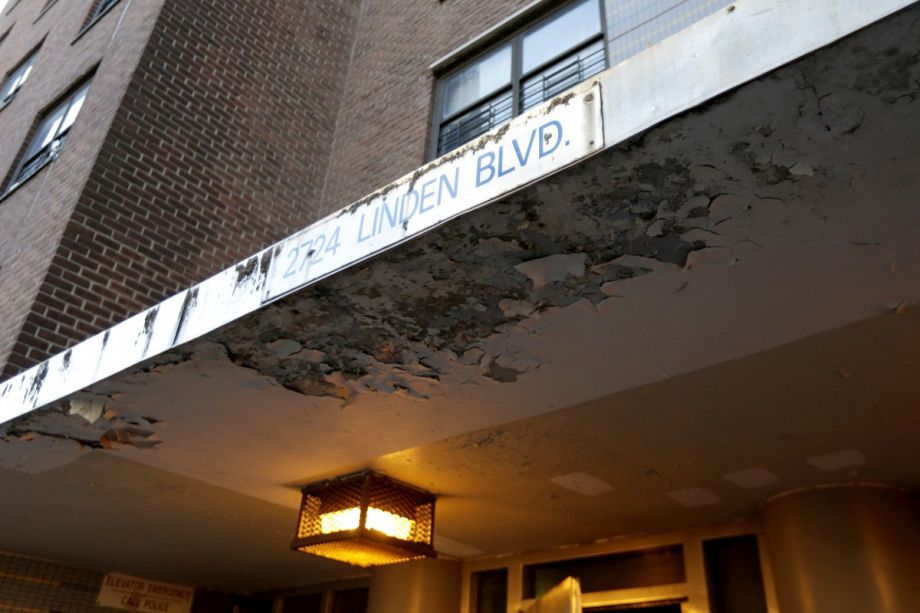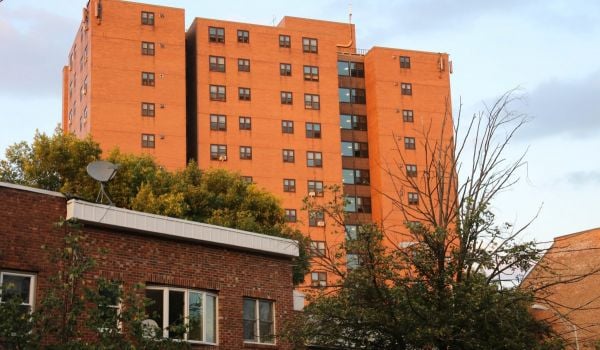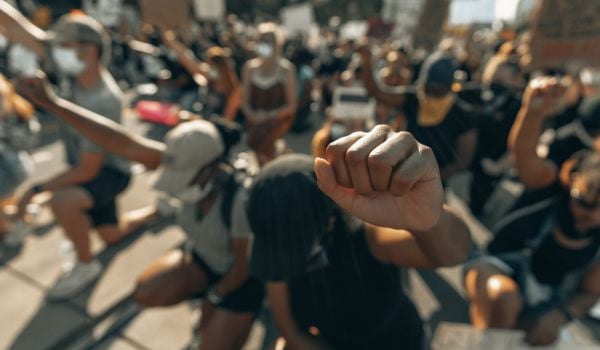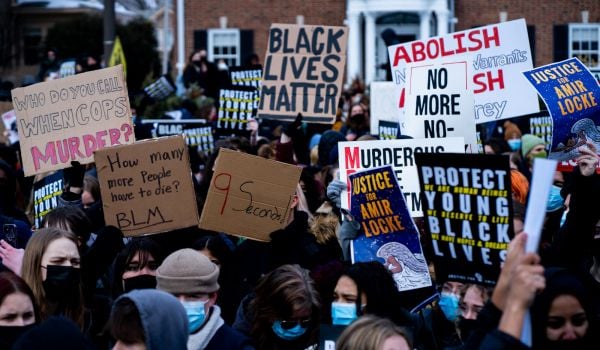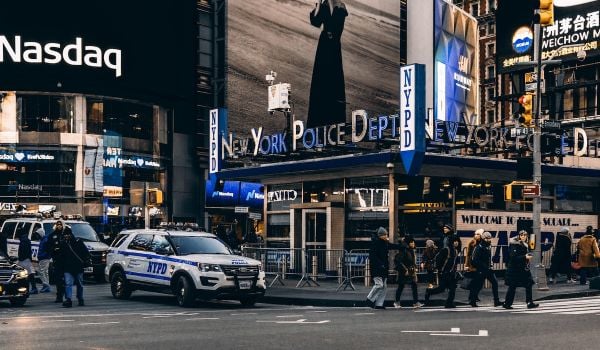As we shake our heads in sorrow over the decision of a mostly white jury to bring no charges against the white police officer who shot and killed an unarmed black man named Michael Brown, it’s easy to lose hope in the feelings of inevitability — of course, Darren Wilson would walk; of course, this will happen again.
And yes, it has already happened again, but in one recent incident of police gunfire taking a black life, it’s important to think about how environmental factors played into the killings. It’s important to consider because the urban environment is something we can change.
The inexperience of an NYPD police officer has been the primary focus in the aftermath of the shooting death of Akai Gurley, an unarmed African-American man killed in a New York City public housing stairwell on Thursday evening, but a secondary factor, adding a stinging symbolism to the tragedy, was darkness.
The lighting in the stairwell of the Louis H. Pink houses where Gurley was shot had reportedly been extinguished for three weeks, according to neighbors. The New York Post reported on Friday that the morning after the shooting, a maintenance worker was spotted repairing the light in question — a late gesture offering little solace to tenants fed up with police brutality, crime, and deferred maintenance.
Residents wonder if the light had been in working order, whether Gurley would still be alive.
Police Commissioner William Bratton told reporters last week that Gurly was “a total innocent who just happened” to run into Officer Peter Liang in a “pitch black” stairwell. Liang drew a flashlight and his weapon “for safety reasons,” the police commissioner said.
In the months preceding Gurley’s death, tenants, advocates, and local government officials had been discussing the distinct, but interrelated, concerns about worsening building conditions and increases in violent crime.
Between 2009 and 2014, overall crime in New York City Housing Authority (NYCHA) developments rose 30 percent. In response, Mayor Bill de Blasio announced a $210.5 million plan in July to reduce violent crime in public housing. Research has shown a connection between disorderly, chaotic surroundings and increases in crime and the city’s own “broken windows theory” of policing is based on this notion.
Concurrently, NYCHA has been attempting to triage the amount of outstanding repairs in its backlog, through its Maintenance & Repair Action Plan. In January 2013, there were 422,639 open work orders. By April 2014, the number of open work orders had been reduced to 80,948.
Even so, NYCHA’s ability to facilitate public safety through repairs has been called into question, most vocally by NYC comptroller Scott Stringer, who released a report in September that outlined the system wide deterioration of the city’s public housing stock.
“We have failed to stop the deterioration of NYCHA housing stock, and there are dire consequences for tenants,” said Stringer at a press conference about the report. “You can’t preserve this housing if there isn’t a plan to deal with the broken windows, rat infestations, water leaks.” Tenants and advocates agree and have been decrying the pace with which improvements have been made.
New York City City Councilmember Ritchie Torres, chair of the council’s Committee on Public Housing, has been watching this issue closely. The complaints about lighting at the Pink Houses still must be confirmed, “but we’re inquiring with the public housing authority about whether there were complaints made by the NYPD, by the caretakers of the building, by the tenants, when these complaints were made, whether NYCHA responded to these complaints — all those are relevant questions,” he said.
“One challenge NYCHA faces is that it’s receiving fewer and fewer resources from the federal government and receives no dedicated funding from either the city or the state,” says Torres. “NYCHA has no steady stream of funding for security improvements including lighting, intercoms, doors, cameras. All of the funding of those improvements depend on member items [and] the whims of individual councilmembers. I have long argued that that’s no way to fund security improvements in public housing. There has to be a budget for security improvements. That is a basic condition of public safety.”
Public safety concerns were the subject of a September 16 meeting of the Committee on Public Housing — a public discussion of Mayor de Blasio’s crime reduction plan.
Elisabeth Glazer, director of the Mayor’s Office of Criminal Justice, testified at the hearing that “dramatically increased police protection,” along with the instillation of light towers and security cameras, a youth employment program, and the shedding of 20,000 feet of scaffolding had made a dent in crime problems in targeted housing developments. (According to Torres, the Pink Houses was not one of the targeted sites.)
Presciently, City Council speaker Melissa Mark-Viverito asserted at the meeting that the success of the Mayor’s plan “should not be just measured by crime statistics or numbers of officers and cameras, but also by whether residents actually feel safer in their homes.”
Akai Gurley’s death has aggravated feelings of insecurity in NYCHA developments. “I was appalled and alarmed to think that walking in a public housing stairwell could potentially be a death sentence,” says Torres. “I’m alarmed by the notion of a police officer patrolling stairwells with a drawn gun, because what happens if that police officer is stunned by a sudden encounter?”
The impromptu memorial for Gurley at the Pink Houses is already covered with signs that document the anger, grief and fear residents feel about a death that may have been preventable had routine maintenance been taken care of in the building. One sign reads, “We Are All Akai Gurley This Whole Damn System Is Guilty.” Another is an American flag covered with the statement, “No Flag Is Large Enough to Cover the Shame of Killing Innocent People.”
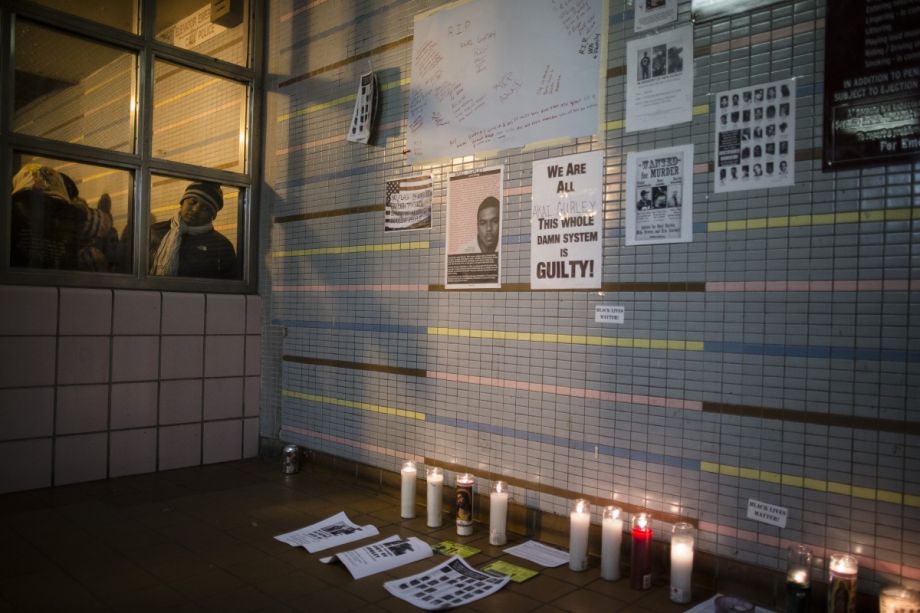
(AP Photo/John Minchillo)
Public safety for African Americans has become a national topic of discussion as the deaths of Trayvon Martin, Michael Brown, Eric Garner and now Akai Gurley and Tamir Rice have only made black communities feel more acutely threatened by the same security forces that are supposed to protect them. And when policing with deadly force gets effected by infrastructure conditions, even more people can be held accountable. “The incident shows the consequences of disinvestment can be deadly,” insists Torres. “If we disinvest from our public housing stock, we’re disinvesting from the safety of public housing residents. That is the core lesson here.”
Torres adds that investment, not increased policing, could have the most influential effect on public safety. “In one sense, it reminds us of the centrality of lighting to the security of public housing — that lighting improvements are the single most important enhancement that you can make for the security of public housing residents. We have to ensure that the exterior and interior of public housing developments are properly lit, so that a poorly lit stairwell is no longer an excuse for an officer to patrol with a drawn gun.”
The Equity Factor is made possible with the support of the Surdna Foundation.

Alexis Stephens was Next City’s 2014-2015 equitable cities fellow. She’s written about housing, pop culture, global music subcultures, and more for publications like Shelterforce, Rolling Stone, SPIN, and MTV Iggy. She has a B.A. in urban studies from Barnard College and an M.S. in historic preservation from the University of Pennsylvania.


